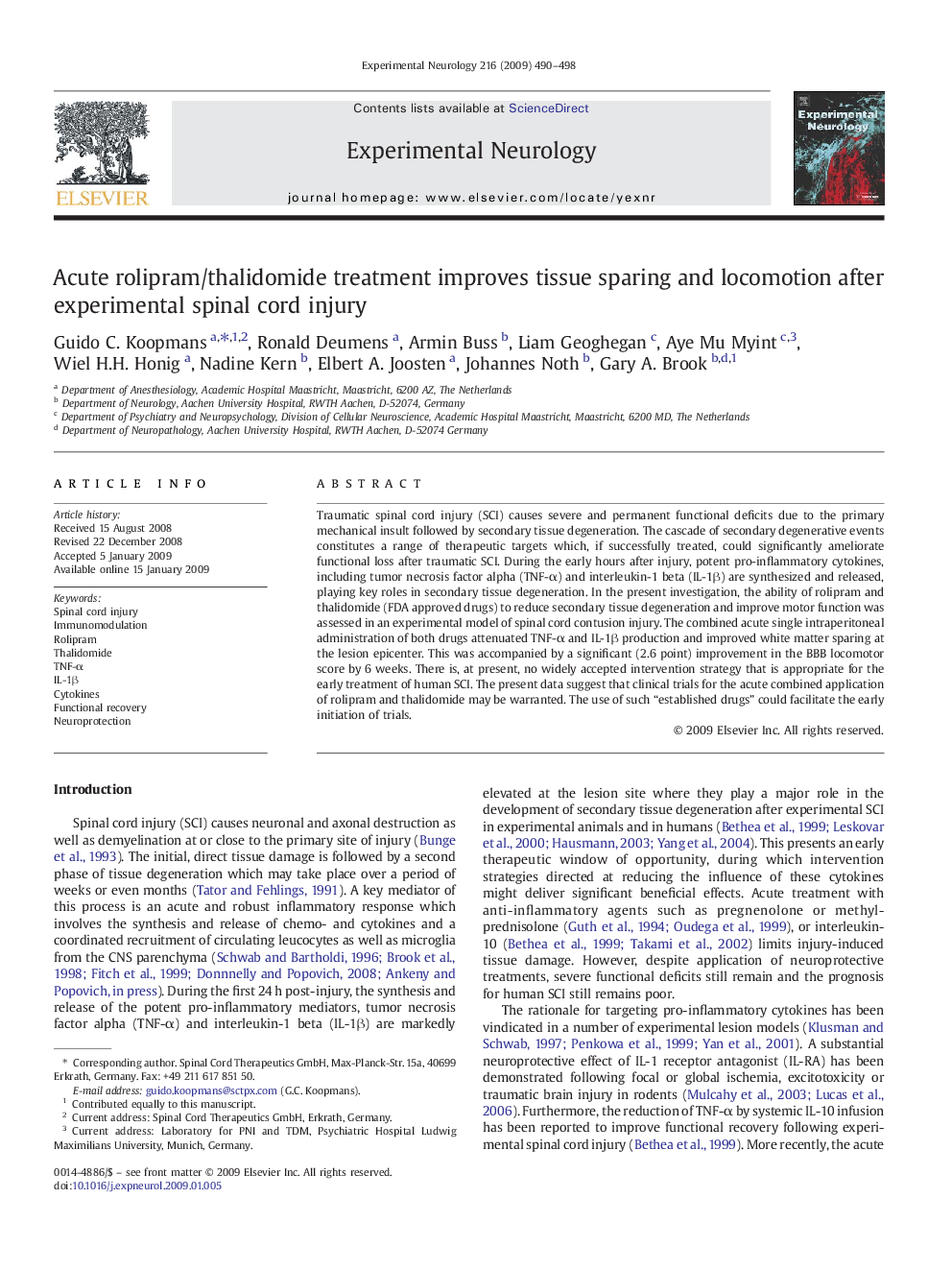| Article ID | Journal | Published Year | Pages | File Type |
|---|---|---|---|---|
| 3056505 | Experimental Neurology | 2009 | 9 Pages |
Traumatic spinal cord injury (SCI) causes severe and permanent functional deficits due to the primary mechanical insult followed by secondary tissue degeneration. The cascade of secondary degenerative events constitutes a range of therapeutic targets which, if successfully treated, could significantly ameliorate functional loss after traumatic SCI. During the early hours after injury, potent pro-inflammatory cytokines, including tumor necrosis factor alpha (TNF-α) and interleukin-1 beta (IL-1β) are synthesized and released, playing key roles in secondary tissue degeneration. In the present investigation, the ability of rolipram and thalidomide (FDA approved drugs) to reduce secondary tissue degeneration and improve motor function was assessed in an experimental model of spinal cord contusion injury. The combined acute single intraperitoneal administration of both drugs attenuated TNF-α and IL-1β production and improved white matter sparing at the lesion epicenter. This was accompanied by a significant (2.6 point) improvement in the BBB locomotor score by 6 weeks. There is, at present, no widely accepted intervention strategy that is appropriate for the early treatment of human SCI. The present data suggest that clinical trials for the acute combined application of rolipram and thalidomide may be warranted. The use of such “established drugs” could facilitate the early initiation of trials.
